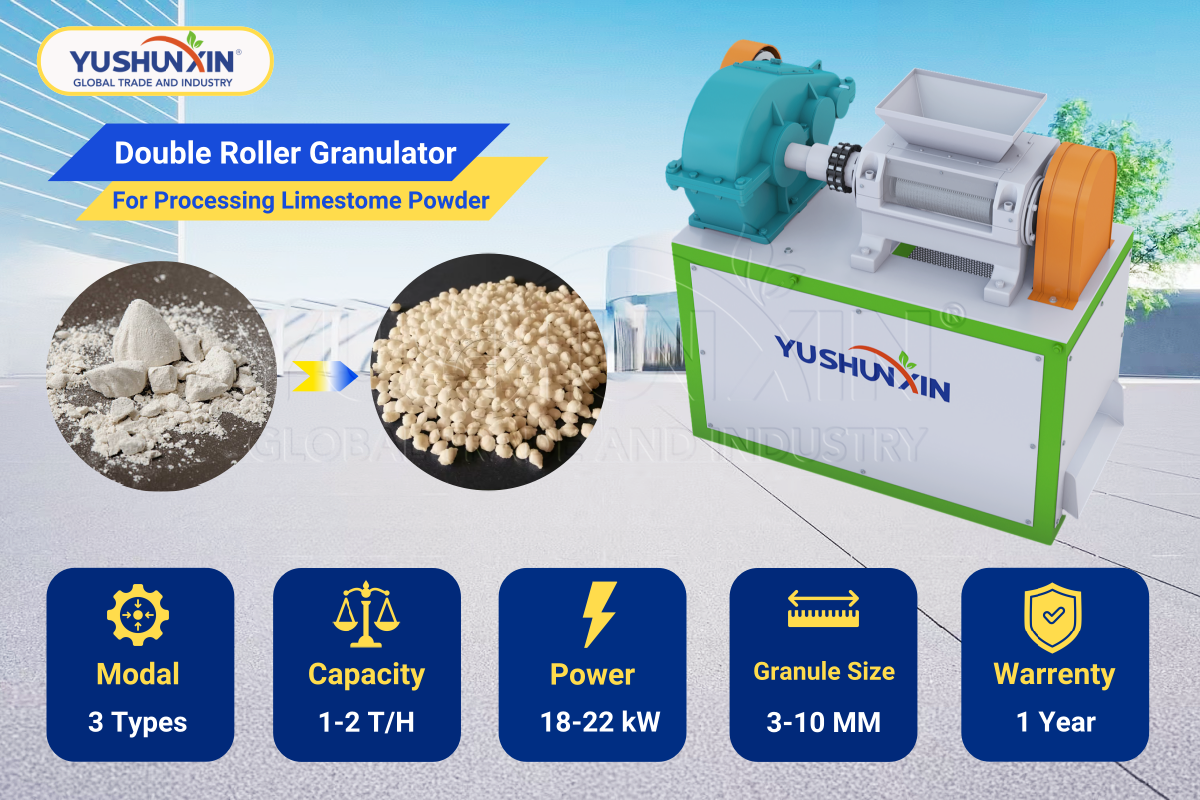The production of lime-based fertilizer granules involves several technical procedures and machinery choices, and each method of granulation leads to distinct cost implications. Different industries such as agriculture, chemical processing, and environmental management demand lime powder or limestone-based particles in specific forms. Therefore, understanding the raw materials, their industrial needs, and the equipment required for granule manufacturing becomes essential for evaluating production costs.
Which Raw Materials Suit Lime Fertilizer Granulation and What Benefits Do They Provide?
Lime rock, limestone powder, and hydrated lime represent the most common bases for fertilizer granule preparation. Limestone powder suits chemical and construction industries because it provides uniform granule structure and stable particle size. Hydrated lime often benefits environmental treatment companies because the granules absorb contaminants and neutralize acidity effectively. Quicklime can also be processed into pellets for metallurgical or flue gas desulfurization applications.
Each raw material requires distinct handling in the production line. For example, limestone powder demands stable feeding and precise mixing to avoid uneven granules, while hydrated lime requires dust suppression equipment to control air quality in the plant. When each industry evaluates cost implications, the type of lime powder directly affects machine configuration, energy consumption, and overall granule quality.

How Do Different Granulating Machines Influence Production Costs?
Fertilizer granulation machinery determines not only the particle size but also the overall cost efficiency of the production process. When a company selects a double roller extrusion granulator, the dry granulation method reduces energy consumption because the procedure does not require additional dryers. The extrusion press compacts lime particles into uniform pellets, which lowers operational expenses in comparison with wet pelletizing methods.
On the other hand, a pelletizer or ball-making drum machine produces round granules with higher uniformity, but the wet granulation process demands extra drying equipment, additional heating costs, and more maintenance. A horizontal mixer becomes necessary before either method to ensure even blending of the lime powder with additives. Meanwhile, a rotary screening machine plays a role in separating qualified granules from dust or oversized particles, which adds to quality control costs but reduces waste.
The choice of equipment like loader type feeder, crane crusher, and belt conveyors also impacts investment budgets. A loader feeder reduces manual labor, while a crusher prepares raw limestone for more effective mixing, and conveyors minimize transport costs inside the plant. Therefore, cost calculations must balance initial machinery investment with long-term energy, labor, and maintenance savings.
What Are the Comparative Advantages of Dry Extrusion Granulation Versus Wet Pelletizing?
The dry double roller extrusion granulation method provides significant cost advantages because it eliminates the need for high-temperature drying and complex slurry preparation. Companies that use this compact extrusion procedure often reduce energy bills and shorten the granule production cycle. This method suits lime powder granulation for fertilizer plants and for industries that demand hard, dust-free particles without additional processing.
Wet pelletizing through a rotary drum or disc pelletizer creates rounder particles that offer better spreading performance in agricultural fields and uniform dissolution rates in chemical applications. However, this process requires higher water usage, long drying time, and additional fuel for rotary dryers, which increases operational costs. Companies must weigh whether the premium quality of pellets justifies these additional expenses. The difference in total cost depends on production scale, raw material choice, and expected end-use performance.
Conclusion
In summary, lime powder, limestone, lime rock, and hydrated lime provide diverse raw materials for fertilizer pellet or particle production. Each industry must consider both benefits and limitations of these materials, as well as the machinery that shapes the granulation method. Dry extrusion granulation with a double roller extruder leads to energy savings and compact pellet production, while wet pelletizing offers better granule uniformity but at higher drying and fuel costs. Supporting equipment such as mixers, crushers, screening machines, and packaging scales further influences total investment and operational budgets.
Therefore, businesses that evaluate cost implications must align raw material characteristics, machine features, and industry-specific requirements. A professional fertilizer equipment manufacturer, Yushunxin, offers comprehensive machinery solutions that help industries make balanced decisions regarding lime powder granulation, ensuring both technical efficiency and economic sustainability. You can visit: https://www.extruder-granulator.com/product/limestone-powder-granulation-machine/



